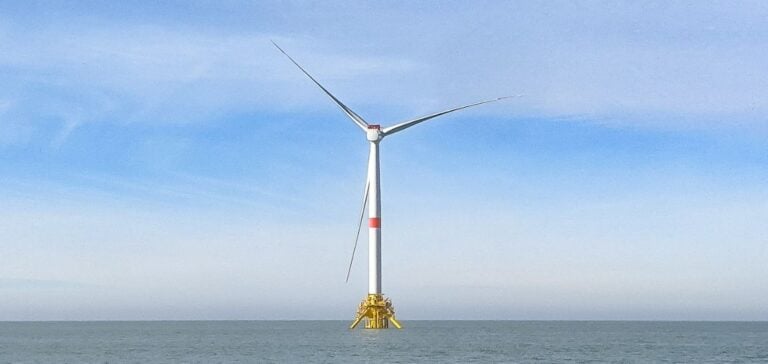The offshore wind turbine industry has experienced spectacular growth in recent years. Since 2016, the average output of offshore wind turbines has doubled from 6 MW to models of up to 15 MW, such as those at Scotland’s Moray West wind farm. Equipped with 60 108-meter-diameter wind turbines, the wind farm can power 1.3 million homes. China, lagging behind the Europeans, is already announcing 20 MW models with rotors almost 300 metres long.
The appeal of larger wind turbines lies in their ability to capture stronger, more constant winds, thereby reducing the cost of the energy produced. Matthieu Monnier, deputy delegate general of the France Renouvelables association, points out that this race to gigantism is motivated by economic and practical considerations: fewer wind turbines are needed for a given capacity, simplifying projects and reducing visual impact.
Floating technology and technical challenges
The future of offshore wind power could lie in floating technologies, enabling wind turbines to be installed in deep waters, far from the coast. Ricardo Rocha, Technical Director at BayWa r.e., sees this technology as a solution to the constraints of traditional foundations. Floating structures can be less massive, making it possible to install larger wind turbines without the current infrastructure limitations.
However, there is no shortage of challenges. Port infrastructures and ships capable of transporting increasingly heavy and voluminous components are rare. Maintenance of wind farms far from the coast also poses problems, despite advances in the use of drones.
Economic and environmental limits
The continuous expansion of wind turbine capacities has weakened the economies of European manufacturers. According to Matthieu Monnier, the need to develop ever more powerful machines before making previous ones profitable has created a difficult economic situation. In addition, the rise of wind turbines raises questions of economic sustainability, with Chinese players benefiting from massive subsidies, regardless of the profitability of their projects.
Even the big names in the wind power industry have their reservations. The CEO of Vestas recently declared that their wind turbines were big enough. However, competitors such as General Electric and Siemens Gamesa continue to develop even more powerful models, potentially reaching 18 MW or more.
An Uncertain Future
The race for gigantic offshore wind turbines is far from over, but it’s running up against physical and economic limits. Wind itself has its limits, and at some point the cost of producing a wind turbine could exceed the profits it generates. The sustainable development of offshore wind power will depend on the industry’s ability to strike a balance between technological innovation and economic viability.






















